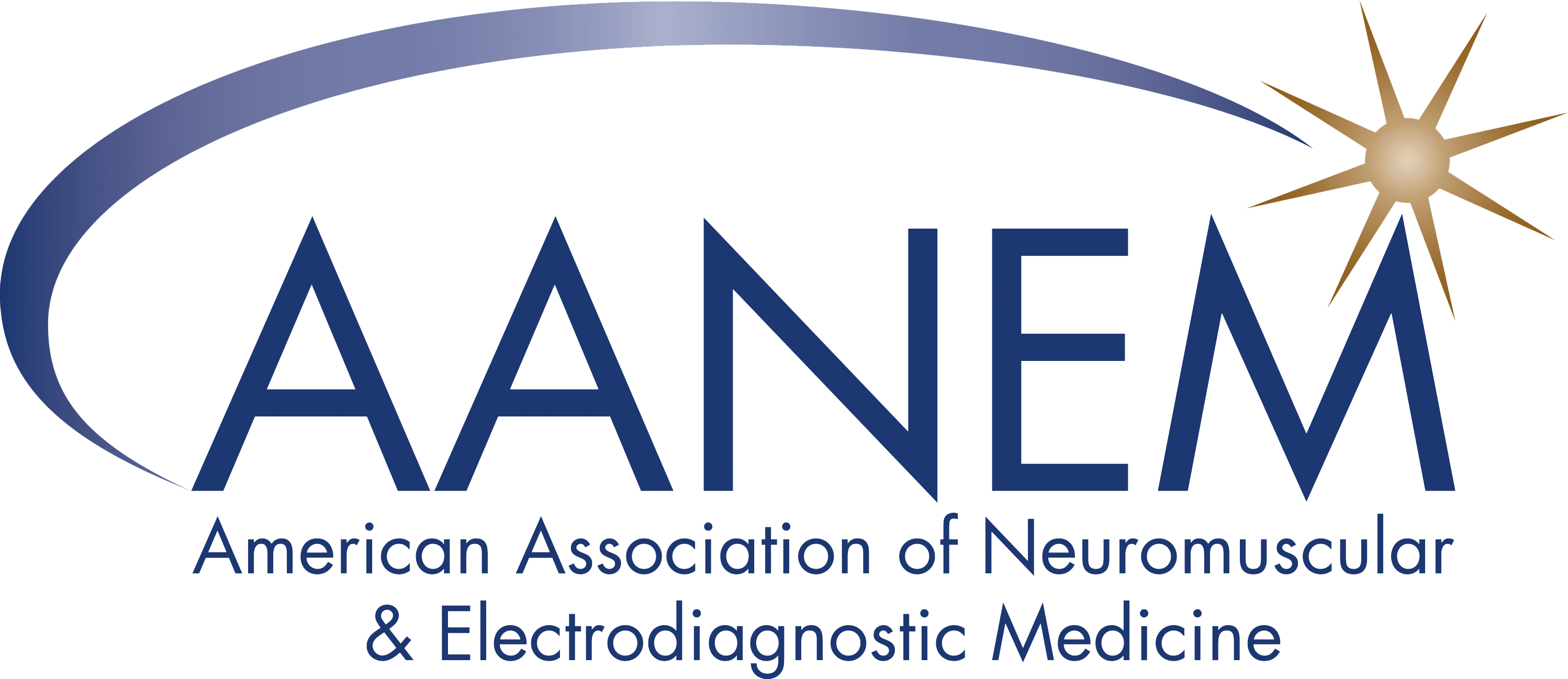Press and Media
View the latest AANEM Achievement Award winners, the American Neuromuscular Foundation (ANF) Abstract Award winners, and the latest AANEM news articles on News Express.
Science News: Serial Nerve Conduction Studies in Guillain-Barré Syndrome: Its Usefulness and Precise Timing
Submitted by: Eman Tawfik, MD
Edited by: Rebecca O'Bryan, MD
Citation: Lee HS, Suh BC, Kim JK, et al. Serial nerve conduction studies in Guillain-Barré syndrome: Its usefulness and precise timing. J Clin Neurophysiol. 2024;41(3):278-284. doi:10.1097/WNP.0000000000000985
Summary: This multicenter retrospective study aimed to assess the usefulness of serial nerve conduction studies in patients with Guillain-Barré syndrome (GBS) who undergo nerve conduction studies (NCS) at an early stage.
The authors reviewed the data of GBS patients who were admitted to nine tertiary university-based hospitals in Korea over 9 years from January 2011 to December 2020. They included patients with early GBS who underwent their first NCS within 10 days of symptom onset and underwent two consecutive follow-up NCSs within 3 weeks (early followed NCS, EFN) and at 3-10 weeks (late-followed NCS, LFN) after symptom onset. Patients with Miller–Fisher syndrome or those eventually diagnosed with acute-onset chronic inflammatory demyelinating polyradiculoneuropathy were excluded.
The results of each NCS were classified into five subtypes of GBS according to two classification criteria: Hadden’s and Rajabally’s criteria as follows: 1) normal study, 2) acute inflammatory demyelinating polyneuropathy (AIDP), 3) acute motor axonal neuropathy (AMAN), 4) inexcitable study, and 5) equivocal study. Further the authors analyzed the change in the GBS during follow-up.
The data of 60 patients were analyzed. In the first NCS, According to Hadden’s classification, the predominant subtype was AIDP (43.3 %), followed by unequivocal subtype (31.7%) then normal study subtype (20%) while only 3.3 % of patients were classified as having AMAN. On the other hand, the predominant subtype was equivocal study (31.7%), followed by AMAN (28.3%) then AIDP (23.3%), while 15% of the patients had a normal study. One patient was classified as having an inexcitable study based on both criteria. During the follow-up visits, 38.3% of the patients showed significant subtype change according to Hadden’s criteria while 53.3% showed subtype change according to Rajabally’s criteria. The subtype shift was more predominant in the early period (3 weeks) compared to the late period (3-10 weeks). At the early period, 8 patients changed from equivocal to AIDP or AMAN, 7 patients changed from normal study to other subtypes, 4 patients with AIDP changed to equivocal. On the other hand, 5 patients who were classified as having an equivocal study according to Rajabally’s criteria changed to AIDP or AMAN, 4 patients changed from normal to another subtype, and 1 patient with AIDP changed to AMAN. The one patient with an inexcitable study changed to AIDP at the 3rd week.
Based on the results, the authors suggested that the best time to repeat the NCS in patients with GBS is at 3 weeks from the symptom onset because the change in the subtype from normal or equivocal to AIDP or AMAN occurred in the early stage in a substantial percentage of the patients.
Comments: The article is a simple clinical study which addresses a common type of polyneuropathy. Its methodology is clear and well-defined. However, using two criteria for GBS classification makes the results somewhat confusing to the reader. The limitation of the study includes its retrospective nature, and the lack of an EMG study which could have been of help in the assessment of the axonal subtype. Prospective study investigating the impact of serial NCS at the 3rd week on the diagnosis and management of GBS patents is needed. It highlights the importance of serial NCS in patients with GBS especially those with normal or equivocal NCS and suggests the best time frame for repeating the NCS in those patients.
Articles of similar interest:
- Rath J, Schober B, Zulehner G, et al. Nerve conduction studies in Guillain-Barré syndrome: Influence of timing and value of repeated measurements. J Neurol Sci. 2021;420:117267. doi:10.1016/j.jns.2020.117267
- Grapperon AM, Berro M, Salort-Campana E, Verschueren A, Delmont E, Attarian S. Guillain-Barré syndrome subtypes: A clinical electrophysiological study of 100 patients. Rev Neurol (Paris). 2019;175(1-2):73-80. doi:10.1016/j.neurol.2018.01.379
Frequently Asked Questions
Q: When will be content of abstracts be viewable, as opposed to just the titles?
A: The abstract content will be available at the annual meeting during the Poster Hall hours. We do not provide abstract presenter information or slides ahead of time. All available information can be found in the AANEM Abstract Guide online when it becomes available.
Q: How do I reach out to abstract or session presenters for an interview?
A: We do not offer member contact information. To connect with abstract or session presenters, review the AANEM Annual Meeting Program when available. Find the topics of interest and connect with the presenter after their lecture or during their abstract poster session time. Currently there is no interview option for virtual attendees.
Q: When can I share information?
A: The embargo on the abstracts themselves is lifted when they have been published in Muscle & Nerve and online in the AANEM Abstract Guide. However, the additional information beyond what is in the abstract itself is still embargoed.
AANEM requires information that goes beyond that which is contained within the abstract, e.g., the release of data not included in the abstract, discussion of the abstract done as part of a scientific presentation, etc. to be embargoed until the start of the annual meeting. Please see the Abstract Embargo Policy.
Q: Will the Abstract Award Reception feature the best posters?
A: The Abstract Award Reception is a social hour in honor of the abstract award winners where all authors, including award winners, will be available to discuss research.
Q: Original research is ONLY presented as posters, correct?
A: Yes - the research is presented in the Poster Hall via abstract posters.
